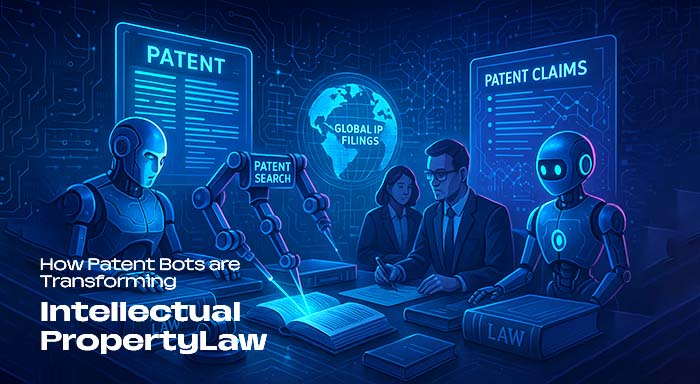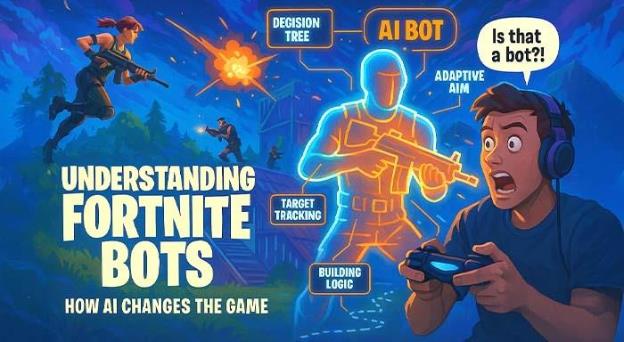Modern technological evolution has changed the world of intellectual property across the global landscape. Patent bots powered by artificial intelligence have emerged as a robust innovation that helps professionals streamline legal workflows and improve accuracy. They provide various advanced tools for drafting, analyzing, and proofreading patent documents, along with providing examiner statistics. Additionally, these bots help protect data susceptible to data protection guidelines and relevant to regional patent laws, like US, UK, and European countries.
Primarily, they leverage cutting-edge AI algorithms like Machine Learning (ML), Natural Language Processing (NLP), and big data to simplify repetitive tasks. This AI platform is designed by analyzing vast number of datasets, including legal documents, patent literature, and prevailing office action insights. This robust automation helps legal teams save time, minimize human efforts, reduce technical risks, improve efficiency, and accuracy of the overall patent ecosystem. This blog will explain to you what exactly they are, including their features, benefits, and real-world impact in simple terms.
Understand Patent Bots
At their core, patent bots are a suite of essential AI-powered tools that streamline various patent-related processes, like prep and prosecution. This automated system acts as a digital companion for intellectual property professionals, investors, and patent attorneys throughout the complete lifecycle. This bot is used to write patents, evaluate patent claims, identify irregularities, and even recommend improvements without requiring human efforts.
Founded in 2018, it is a US-based company situated in Somerville renowned for automated patent proofreading and analytics. The company allows patent attorneys to deliver fast, efficient results, perform claim evaluation, analyze examiner statistics, and boost revenue. With advanced NLP and ML support, the platform is capable of identifying formatting issues, understanding complex legal concepts, and handling vast databases. They help identify errors that might get missed by human reviews and deliver high-quality products while maintaining professional and ethical standards.
How Do They Work?
Understanding the mechanism and functioning of sophisticated tools helps legal professionals to know their capabilities and limitations. This advanced system leverages various technologies to assist attorneys to write, analyse, and verify patent documents efficiently.
With Machine Learning support, these bots are designed to analyze large amounts of patent data, identify common errors, and evaluate examiner feedback. The system updates their memory from each interaction, offering highly accurate, personalized results while detecting errors.
They leverage advanced natural language processing technology to effectively analyze patent text, find patterns, and identify connections between different sections. NLP components identify and fix grammatical errors, formatting issues, and citation, along with interpreting complex legal languages.
This Sophisticated platform integrates extensive databases, including patent documents, USPTO standards, examiner preferences, and latest patent prosecution rules. This vast knowledge base allows professionals to compare different policies and suggest smart, data-driven suggestions.
Meanwhile, patent bots analyze patent documents and legal databases to identify and suggest errors, like
- Unauthorized patent claim numbering
- Unclear and missing antecedents
- Incorrect document language
- Duplicate or vague phrasing
- Grammatical structure issues
Instead of replacing human patent attorneys, they lower foundational tasks, eliminate the chances of human errors, and significantly accelerate the feedback cycle by providing real time data insights.
Features of Advanced Patent Bots
The platform offers numerous smart tools and features sets to simplify patent-related processes. These AI-powered features help automate repetitive tasks with lower errors, fast speed, and high accuracy. Let’s go through it one by one:
- Automated Proofreading and Error Detection
Legal documents often contain complex technical terms, high-level claim language, and advanced content formatting that makes them difficult to read. This is where patent bots interpret complex documents into smaller concepts, detect errors, and assist teams with improvements. So, what they can do?
- Analyse inconsistent claim numbering
- Language complexity issues
- Compliance security risks
- Detect basic antecedent errors
- Review patent documents
- Sentence structuring and formatting issues
- Overlooked dependencies and spacing issues
This feature doesn’t only mean improving grammar issues; they focus on ensuring each document adheres to legal expectations, drastically boosting the chances of getting accepted.
- Smart Drafting Solution
One of the effective but time-consuming tasks in IP laws is to create original, authenticate patent claims and documentation, unlike normal proofreading. Advanced technology integration assist professional at every stage of document creation, from creating drafts to sharing best practices. The smart, AI-driven drafting assistant helps:
- Assist by providing organized claim format based on input
- Automatically remove redundant sections, like summary
- Help simplify overly technical language or vague phrases
This is such an effective technique for ever-evolving med tech industries, like NanoBots where legal teams leverage it to patent new inventions quickly and precisely.
- 3. Deep Comparison from Patent Archives
Before filing a patent, it is crucial to ensure that the idea should be unique and not be claimed earlier. With a mass database integration, patent bots search and cross verify your draft with thousands of global patent guidelines and legal documents. They will tell you which claim, phrase, and idea matches with the legacy patents, allow users to do modifications to reduce the chance of getting rejected.
- Document Structuring and Formatting
Each patent document is drafted with clear, steady guidelines, especially when working internationally. They ensure your document is filled with right sequencing, adhere to region specific formatting rules, and even offer improvement suggestions to tailor the style of different jurisdictions. This feature is beneficial for startups and enterprises looking for time-effective solutions, here automated support and nuanced formatting can help them draft effective patent files.
Similar to Raid Bots, which automate temperance in digital gaming platforms to maintain consistency and structure, this platform does the same for legal documents---fostering clarity, efficiency, and structuring for complex patent workflows.
Application Areas for the Platform
Beyond being limited to one sector, patent bots have revolutionized a wide range of industries across countries. Its flexible and streamlined nature make it an effective platform for different industries, including:
- Healthcare and Med-tech: The growing demand for medical devices increases the need for fast, accurate patent filling.
- AI and ML Modeling: Latest innovation and emerging trends require advanced office action modeling to reduce high rejection rates.
- Electronics and Manufacturing: Consistent updates and variations require scalable documentation tools for efficient and quick filling.
- Education Technology: Many advanced automations in educational industries also require smart AI assistants to fill out patents, like Kahoot Bot and Blooket Bot.
Across the global audience, many startup firms or individual inventors can leverage cost-effective, automated patent filling tools like this to streamline the process with large IP teams.
Impact of Patent Bots Across the Globe
- These bots store client confidential details and sensitive legal information on its server in the United States. For each user who registers in patent bot’s official website, their details are directly transmitted to their US-based registered server location.
- Primarily based in the US, the platform offers various services that meets UK patent law and protects data integrity under data protection law—UK GDPR protocol. These patent systems provide tools for document proofreading, drafting, analyzing, and examiner statistics under the UK patent system.
- Similarly, the platform’s services are aligned to European patents law and the European Patent Office (EPO). For instance, PatentPlex—an innovative product that helps identify and analyze European patent numbers and cross-reference patents from the EPO.
Conclusion:
The Modern IP landscape has seen significant advancement in recent years, offering unprecedent speed and accuracy in patent prosecution, drafting, and proofreading. This AI-driven legal bots have become popular among legal professionals to fill patents, manage IP portfolios, and gain competitiveness in the rapidly changing digital world. With significant AI advancement, the demand for quick, efficient, and statistics-based patent filling is becoming more crucial than ever. Now is the correct time to explore patent bots to fill out a patent for your existing or future invention.



